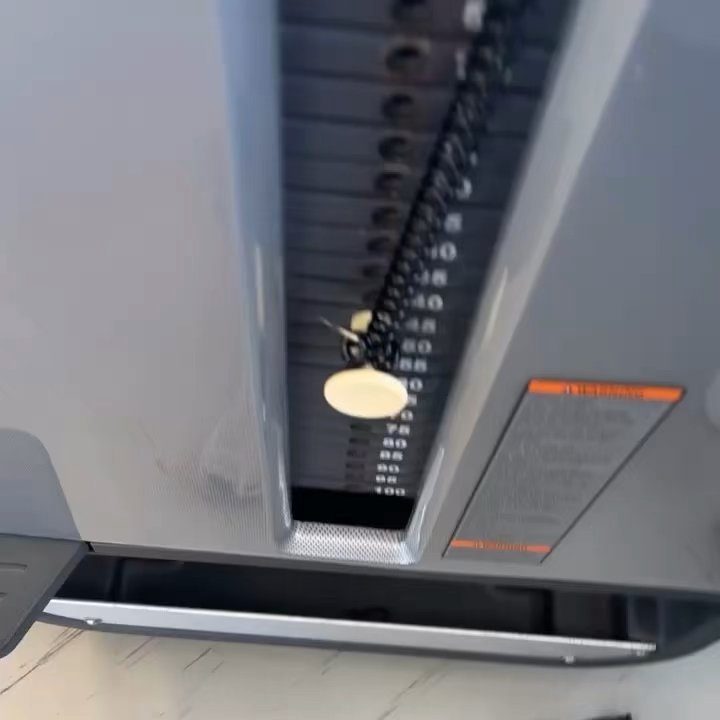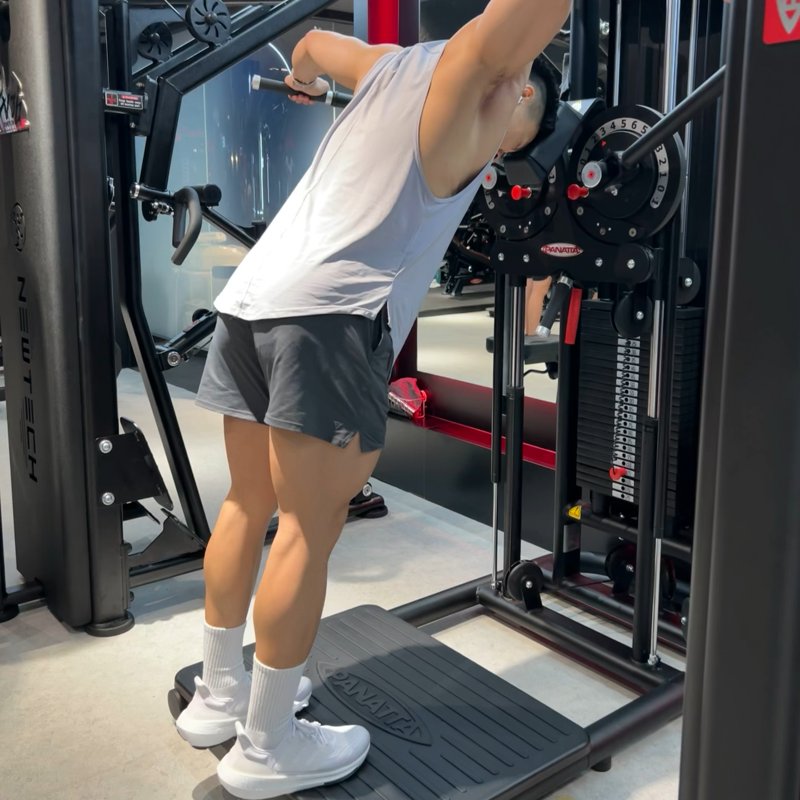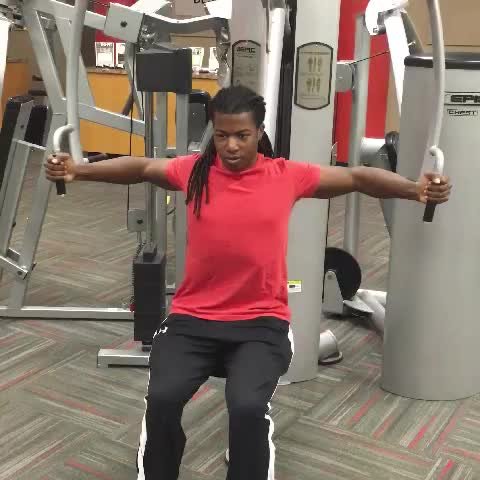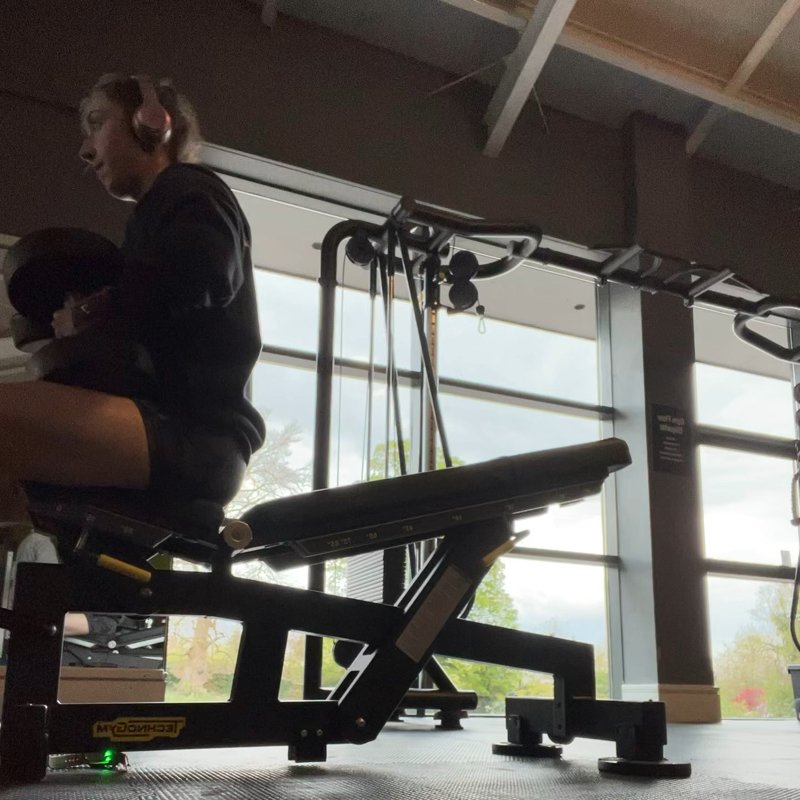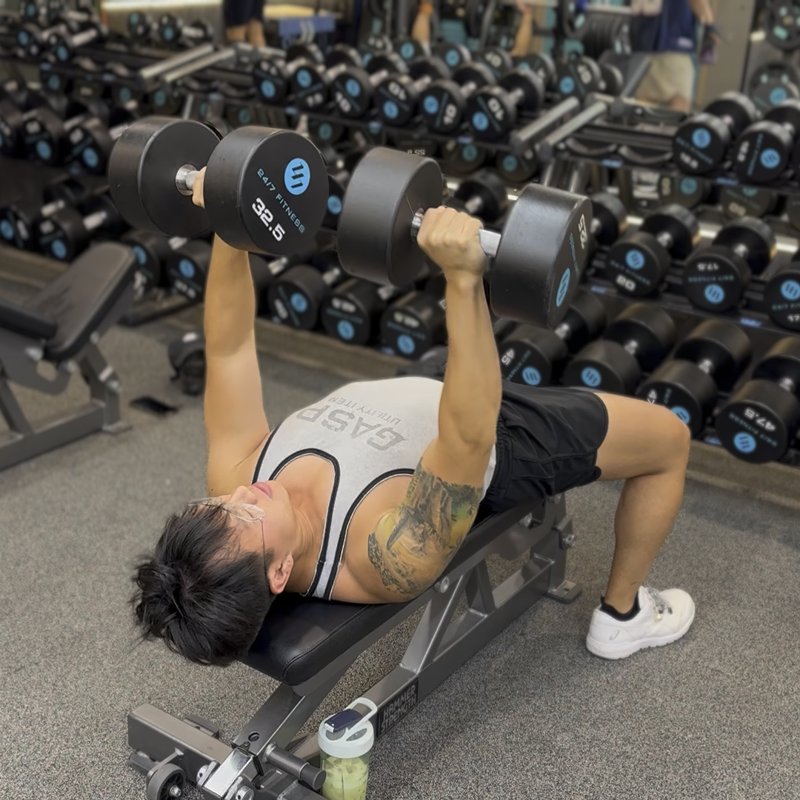Cable Fly: The Ultimate Guide
The Cable Fly is an isolation exercise performed using a cable machine that targets the pectoral muscles through a wide arc motion, emphasizing chest contraction and providing constant tension throughout the movement for effective muscle development.
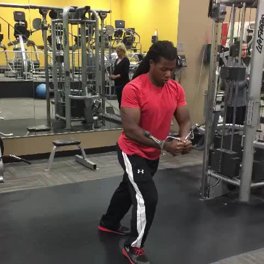
Quick Facts
Key Benefit
Enhanced chest muscle contraction with constant tension
Primary Muscles
Pectoralis Major
Secondary Muscles
Abdominals, Anterior Deltoids, Biceps, Pectoralis Minor
Equipment
cable machine
Difficulty
Intermediate
Type
Strength
In This Guide
Ready to master the Cable Fly?
Track your progress, see improvements over time, and build strength consistently.
Download GravitusThe Cable Fly is one of the most effective isolation exercises for developing chest definition and muscularity. Unlike compound pressing movements that heavily involve the triceps and shoulders, the cable fly places focused tension directly on the pectoral muscles throughout the entire range of motion. What makes the cable fly particularly valuable is the constant resistance provided by the cables. While dumbbell flies lose tension at the top of the movement due to gravity, cables maintain consistent resistance throughout the entire arc, creating more complete chest muscle recruitment. This exercise is highly versatile, with adjustment options that allow you to target different portions of the chest. By setting the cables at high positions, you emphasize the lower chest fibers; middle positions target the mid-chest; and low positions focus on the upper chest. This adaptability makes the cable fly an excellent tool for developing balanced chest aesthetics. Additionally, the standing cable fly engages core stabilizers and improves functional strength across multiple planes of motion. This translates well to sports and activities requiring controlled chest and shoulder movements. Whether your goal is to add definition after building mass with compound movements, develop a stronger mind-muscle connection with your chest, or simply add variety to your training, the cable fly deserves a place in your chest development program.
Benefits of Cable Flies
The cable fly offers several distinct advantages over other chest exercises.
Constant Tension
Unlike free-weight alternatives, cables maintain resistance throughout the entire range of motion, creating more comprehensive muscle fiber recruitment.
Isolation Focus
Minimizes triceps and deltoid involvement compared to pressing movements, allowing greater focus on chest muscle development.
Adjustable Angles
Cable height can be modified to target specific portions of the chest (upper, middle, or lower), providing balanced development.
Joint-Friendly
The natural arc of the cable fly is generally less stressful on the shoulders than many pressing movements, making it accessible for those with certain shoulder limitations.
Core Engagement
The standing position and unilateral options require significant core stabilization, providing additional benefits beyond chest development.
Proper Form & Technique
Setup
- Position the cable pulleys at approximately shoulder height for standard flies (adjust higher for lower chest emphasis or lower for upper chest emphasis).
- Select an appropriate weight that allows controlled movement while maintaining proper form.
- Attach a single-handle grip to each pulley.
- Stand in the center of the cable station with feet shoulder-width apart in a split stance for stability.
- Grasp each handle with palms facing forward or in a neutral position (depending on comfort).
- Step forward slightly to create initial tension in the cables, with a small forward lean from the hips (approximately 10-20 degrees).
- Begin with arms extended out to the sides, elbows slightly bent (10-30 degrees) but not locked.
- Maintain this slight elbow bend throughout the entire movement.
Movement
- Engage your core and maintain a stable posture with chest up and shoulders back.
- Inhale and prepare for the movement.
- Exhale as you bring your hands together in a wide arc motion in front of your chest, leading with the inside of your wrists.
- Focus on squeezing your chest muscles as your hands come together, as if hugging a large barrel.
- At the peak contraction, your hands should meet or nearly meet at approximately chest level.
- Hold the contracted position briefly (1-2 seconds), focusing on maximum chest contraction.
- Inhale as you slowly return your hands to the starting position with control, maintaining tension in the chest muscles.
- Control the return phase, resisting the pull of the cables rather than allowing them to pull your arms back.
- Repeat for the desired number of repetitions, maintaining proper form throughout.
Key Form Tips
Elbow Position
Maintain a consistent slight bend in the elbows throughout - not completely straight or excessively bent.
Movement Path
Follow a wide arc in front of your body, keeping the motion horizontal rather than allowing hands to drift upward or downward.
Core Stabilization
Keep your core engaged to prevent arching your back or being pulled off balance by the cables.
Chest Focus
Concentrate on using your chest muscles to perform the movement, not your shoulders or arms.
Controlled Tempo
Avoid rushing through reps - use a controlled pace with emphasis on the contraction and eccentric phases.
Muscles Worked
Primary Muscles
- pectoralis major: The large, fan-shaped chest muscle that is the primary target of this exercise, specifically the sternal (mid and lower) portion.
Secondary Muscles
- anterior deltoids: The front portion of the shoulder muscles assists in the fly movement, particularly in the beginning phase.
- pectoralis minor: The smaller chest muscle that lies beneath the pectoralis major, engaged during the contractive phase and helps stabilize the shoulder.
- biceps: Acts as a stabilizer for the elbow joint during the exercise, particularly with neutral grip variations.
- abdominals: The abdominals, obliques, and lower back work isometrically to maintain proper posture and resist rotation during the movement.
Common Mistakes and How to Fix Them
Excessive Elbow Bending
Bending the elbows too much turns the movement into a press rather than a fly. Maintain a consistent, slight bend in your elbows (approximately 10-30 degrees) throughout the entire movement, focusing on moving the arms in an arc rather than pressing forward.
Hunching Shoulders
Rolling the shoulders forward reduces chest engagement and can strain the shoulder joints. Keep your chest up and shoulders down and back throughout the movement, creating space for proper chest activation.
Using Momentum
Swinging the body or using jerking motions reduces chest stimulation and increases injury risk. Control the movement in both directions, particularly resisting the weights during the return phase, and maintain stable posture throughout.
Inconsistent Arc Path
Allowing hands to drift upward or downward during the motion changes muscle emphasis unpredictably. Focus on maintaining a consistent horizontal plane of motion, creating a wide arc in front of your body with the hands tracing the same path during both phases.
Standing Too Close to the Machine
Insufficient distance from the cable station reduces range of motion and effective tension. Step forward enough that there is constant tension on the cables from the start position, and ensure your arm path is not restricted by the machine.
Cable Fly Variations
Angle Variations
-
High To Low Cable Fly
Performed with pulleys set above shoulder height, bringing the handles down and together to emphasize the lower chest fibers.
-
Low To High Cable Fly
Performed with pulleys set below shoulder height, bringing the handles up and together to target the upper chest fibers.
-
Incline Cable Fly
Performed on an incline bench with cables set low, creating a movement that specifically targets the upper chest.
Technical Variations
-
Single Arm Cable Fly
Performed one arm at a time for increased core engagement and to address potential muscle imbalances between sides.
-
Cable Chest Crossover
A variation where you cross one hand over the other at the point of contraction for increased range of motion and peak contraction.
-
Kneeling Cable Fly
Performed in a kneeling position to eliminate lower body contribution and increase stability for focused chest work.
Frequently Asked Questions
Neither is universally "better" - they each have distinct advantages. Cable flies provide constant tension throughout the entire range of motion and allow for more varied angles of pull, potentially creating more complete chest activation. Dumbbell flies are more accessible (requiring only dumbbells and a bench) and may engage stabilizer muscles differently. Many experienced lifters find cable flies more comfortable for the shoulders due to the natural arc of movement and adjustable tension. For optimal chest development, incorporating both variations into your program at different times is ideal. If your goal is peak contraction and constant tension, cable flies generally excel; if you're focused on the stretched position and have good shoulder mobility, dumbbell flies might be preferable.
Cable flies are primarily an isolation movement designed to target the chest muscles directly, so weight selection should prioritize form and muscle connection over moving heavy loads. Most lifters benefit from selecting a weight that allows 10-15 controlled repetitions with full focus on the chest muscles. You should feel a distinct stretch at the beginning of the movement and a strong contraction at the end, without requiring excessive momentum or losing proper positioning. If you find yourself hunching forward, significantly bending the elbows more during the movement, or using body momentum, the weight is too heavy. Since this is typically not a primary mass-building exercise, moderate weights with excellent form will generally yield better results than heavier weights with compromised technique.
This depends on your specific goals. For maximum strength development on the bench press, perform the bench press first when your energy and neuromuscular system are fresh. Cable flies would then serve as an accessory movement to further fatigue and isolate the chest muscles. If your goal is to pre-exhaust the chest muscles before bench pressing (a technique used to make the chest work harder during compound movements), you would perform cable flies first. Most traditional bodybuilding programs place compound movements like bench press before isolation exercises like flies. However, periodically reversing this order can provide a novel stimulus and help improve mind-muscle connection during your pressing movements.
While cable flies are an excellent chest exercise, building a well-developed chest typically requires a combination of compound and isolation movements. Compound exercises like bench presses, dips, and push-ups allow you to move heavier weights and stimulate more overall muscle growth, while isolation exercises like cable flies help refine the shape and improve mind-muscle connection. That said, if you have shoulder limitations that make pressing movements uncomfortable, a program emphasizing cable flies and similar isolation exercises can still develop the chest effectively, though progress might be slower than with a more varied approach. For most trainees, using cable flies as part of a comprehensive chest routine that includes both compound and isolation movements will yield the best results.
Video Demonstrations
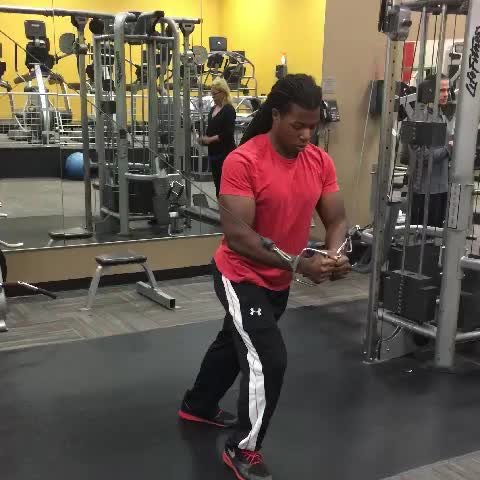
Log in to watch video demonstrations
Login to Watch3 video demonstrations available
Find more video demonstrations in the Gravitus app
Tips from the Community
-

Keep your core tight and elbows up throughout the entire movement.
-

Slight bend in elbows, don’t stress biceps tendon
Track your progress with Gravitus
Download Gravitus to log your workouts, track your progress, and join a community of fitness enthusiasts.

Helpful Resources
One Rep Max Calculator
Find your one rep max for any exercise without maximal testing. Essential for developing effective strength training programs.
Calculate 1RMWorkout Programs
Follow structured workout programs created by fitness professionals to maximize your strength and muscle gains.
View Programs